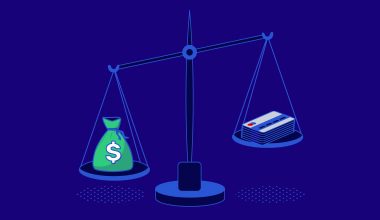Recently, inflation rates have reached their highest levels in over a decade, leading to significant impacts across multiple financial sectors. Should you hold a fixed deposit, it’s important to consider how this economic shift may impact your returns. Let’s explore the influence of inflation on fixed deposit rates and discuss strategies you can implement to reduce its effects.
Comprehending Fixed Deposit Rates
Fixed deposits (FDs) are favored for their reliability and assured returns. By investing in a fixed deposit, you secure your funds at a predetermined interest rate for a defined duration. Generally, the interest rate for fixed deposits surpasses that of standard savings accounts, positioning it as a compelling choice for those seeking secure investment opportunities.
The Influence of Inflation on Fixed Deposit Rates
Inflation gradually diminishes your purchasing power as time progresses. As prices increase, the actual value of your returns decreases. For example, when inflation stands at 5% while your fixed deposit rate is merely 3%, you are essentially experiencing a decline in your purchasing power. While your fixed deposit rate may appear attractive at first glance, it’s important to consider that if it fails to outpace inflation, the actual value of your returns could diminish over time.
It’s important to analyze the current situation: As we move into 2024, inflation rates have risen, while the adjustments to fixed deposit rates by many banks have been minimal. This situation indicates that while your fixed deposit rate has seen a slight increase, it may not adequately offset the rising cost of living.
Strategies to Safeguard Your Investment
1. Explore Options for Better Rates
It’s important to note that fixed deposit rates can vary significantly among different banks. Evaluating various banks and financial institutions could lead you to discover a more favorable rate that exceeds inflation. Certain financial institutions provide attractive promotional rates or enhanced interest for substantial deposits or extended terms.
2. Explore Shorter Terms
Given the unpredictability of inflation, committing your funds to a long-term fixed deposit may not be the most advantageous approach. Choosing shorter terms enables you to reinvest your capital at potentially more favorable rates as they arise.
3. Spread Out Your Investments
Diversifying your investments is crucial for managing risk effectively. By diversifying your investments, you can enhance your protection against inflationary pressures. It may be beneficial to incorporate assets such as inflation-linked bonds or equities, as they typically yield stronger performance in times of inflation.
4. Consider Inflation-Protected Securities
Certain financial instruments, such as inflation-protected bonds, modify their interest payments in accordance with prevailing inflation rates. These can serve as a beneficial addition to fixed deposits, assisting in preserving your purchasing power, particularly during periods of rising inflation.
5. Consistently Assess Your Investment Approach
Inflation and interest rates are subject to change and can fluctuate over time. Consistently assessing your investment approach guarantees that your fixed deposit rate stays competitive and aligns with your financial objectives. Consider making adjustments to your investments to ensure they are in harmony with current economic conditions.
The impact of inflation on fixed deposit rates is considerable, as it diminishes the actual value of your returns. By comparing rates, opting for shorter terms, diversifying your portfolio, and looking into inflation-protected securities, you can enhance the security of your investments. Consistently evaluating your financial plan is essential to outpace inflation and maximize the returns on your fixed deposits.






